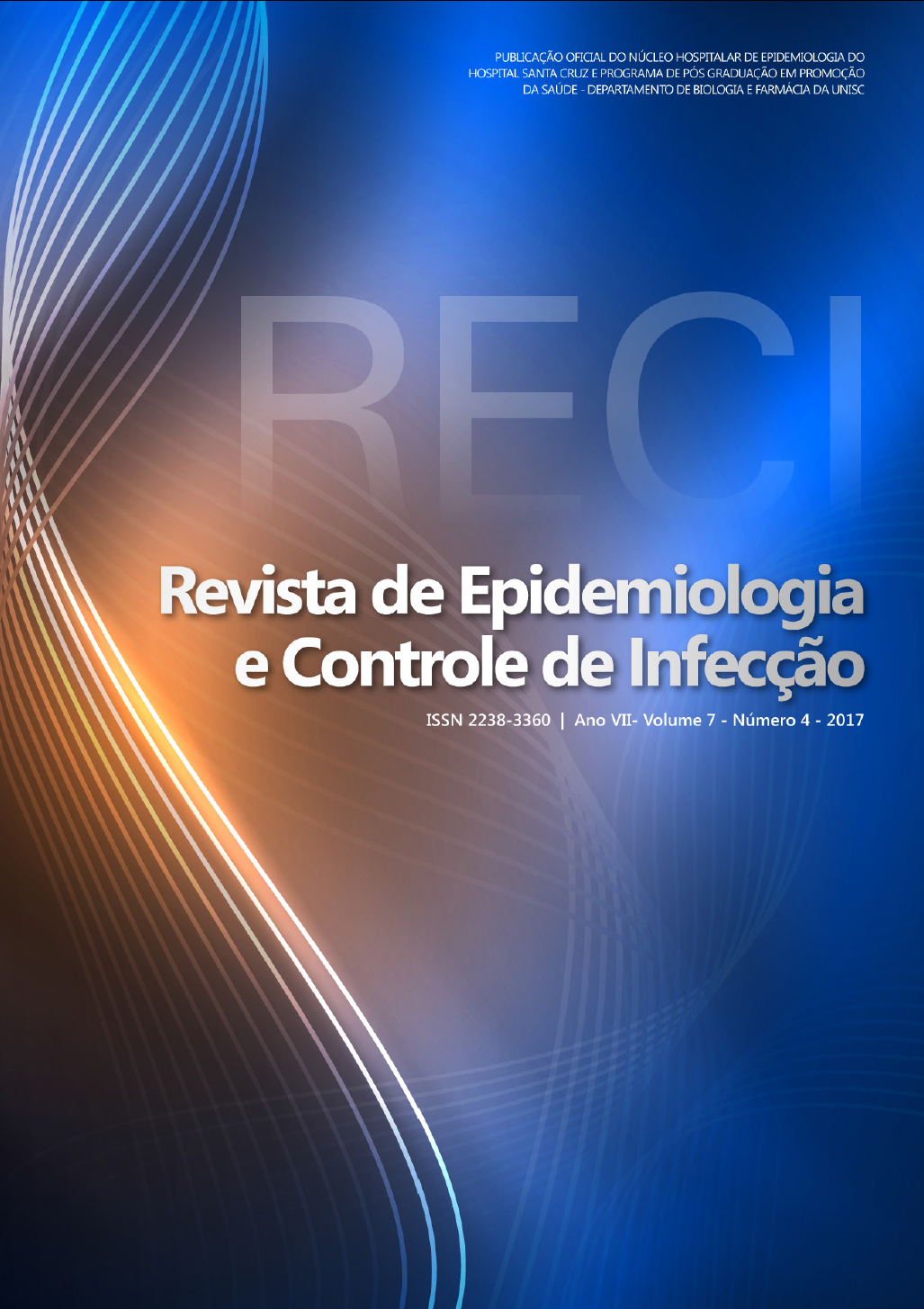Leptospirosis incidence and associated factors in Chapecó, Santa Catarina, Brazil
DOI:
https://doi.org/10.17058/reci.v7i4.7838Abstract
Backgrounds and Objectives: The environmental conditions are directly related to population quality of life and health, which justifies the evaluation of factors associated with the occurrence of certain grievances. This study aimed to evaluate the incidence of confirmed cases of leptospirosis and associated factors in Chapecó-SC. Method: This is a cross-sectional descriptive exploratory study with data obtained in the individual reporting and investigation of records from the database of the Notifiable Diseases Information System, of the Epidemiological Surveillance Department from the Health Office, related to all confirmed cases of leptospirosis for the period 2010-2015. Results: 24 positive cases were registered in the period. Of these, 87.5% affected male individuals aged 12-59 years. 8.3% of individuals reported they had came in contact with water or mud flood, and in the other cases, the probable contamination occurred in areas with signs of rodents (70.8%) or with the presence of these animals (41.6 %), rivers, streams, ponds or dams (37.5%) stockbreeding (33.3%). The workplace as the primary environment infection (41.6%). The relationship between the number of leptospirosis cases and pluvial indexes was not evident. Conclusion: It stands out that the infections occurred mainly by occupational exposure, which brings it back to the importance of performance of the health services in continuing education and leptospirosis prevention campaigns, mainly focused on the health workers exposed to areas of risk.Downloads
Downloads
Published
How to Cite
Issue
Section
License
The author must state that the paper is original (has not been published previously), not infringing any copyright or other ownership right involving third parties. Once the paper is submitted, the Journal reserves the right to make normative changes, such as spelling and grammar, in order to maintain the language standard, but respecting the author’s style. The published papers become ownership of RECI, considering that all the opinions expressed by the authors are their responsibility. Because we are an open access journal, we allow free use of articles in educational and scientific applications provided the source is cited under the Creative Commons CC-BY license.


